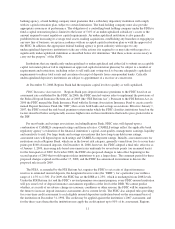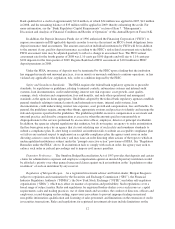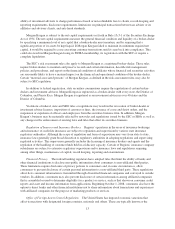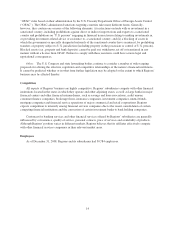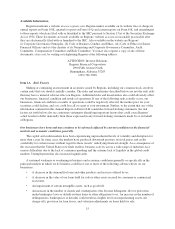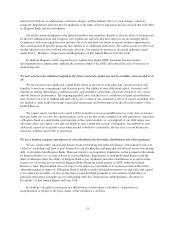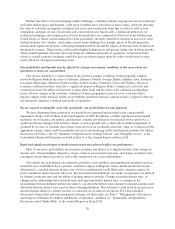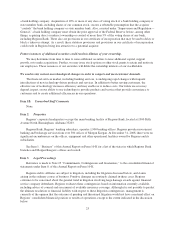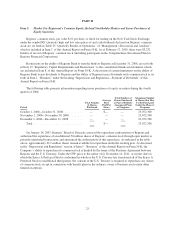Regions Bank 2008 Annual Report Download - page 26
Download and view the complete annual report
Please find page 26 of the 2008 Regions Bank annual report below. You can navigate through the pages in the report by either clicking on the pages listed below, or by using the keyword search tool below to find specific information within the annual report.Overall, during the past year, the general business environment has had an adverse effect on our business,
and there can be no assurance that the environment will improve in the near term. Until conditions improve, we
expect our businesses, financial condition and results of operations to be adversely affected.
Current market developments may adversely affect our industry, businesses and results of operations.
Dramatic declines in the housing market during the prior year, with falling home prices and increasing
foreclosures and unemployment, have resulted in, and may continue to result in, significant write-downs of asset
values by us and other financial institutions, including government-sponsored entities and major commercial and
investment banks. These write-downs, initially of mortgage-backed securities but spreading to credit default
swaps and other derivative securities, have caused many financial institutions to seek additional capital, to merge
with larger and stronger institutions and, in some cases, to fail. Reflecting concern about the stability of the
financial markets generally and the strength of counterparties, many lenders and institutional investors have
reduced, and in some cases, ceased to provide funding to borrowers including financial institutions.
This market turmoil and tightening of credit have led to an increased level of commercial and consumer
delinquencies, lack of consumer confidence, increased market volatility and widespread reduction of business
activity generally. The resulting lack of available credit, lack of confidence in the financial sector, increased
volatility in the financial markets and reduced business activity could materially and adversely affect our
business, financial condition and results of operations.
Further negative market developments may affect consumer confidence levels and may cause adverse
changes in payment patterns, causing increases in delinquencies and default rates, which may impact our charge-
offs and provisions for credit losses. A worsening of these conditions would likely exacerbate the adverse effects
of these difficult market conditions on us and others in the financial services industry.
The soundness of other financial institutions could adversely affect us.
Since mid-2007, the financial services industry as a whole, as well as the securities markets generally, have
been materially and adversely affected by very significant declines in the values of nearly all asset classes and by
a very serious lack of liquidity. Financial institutions in particular have been subject to increased volatility and an
overall loss in investor confidence.
Our ability to engage in routine funding transactions could be adversely affected by the actions and
commercial soundness of other financial institutions. Financial services companies are interrelated as a result of
trading, clearing, counterparty, or other relationships. We have exposure to many different industries and
counterparties, and we routinely execute transactions with counterparties in the financial services industry,
including brokers and dealers, commercial banks, investment banks, mutual and hedge funds, and other
institutional clients. As a result, defaults by, or even rumors or questions about, one or more financial services
companies, or the financial services industry generally, have led to market-wide liquidity problems and could
lead to losses or defaults by us or by other institutions. Many of these transactions expose us to credit risk in the
event of default of our counterparty or client. In addition, our credit risk may be exacerbated when the collateral
held by us cannot be realized or is liquidated at prices not sufficient to recover the full amount of the loan or
derivative exposure due us. There is no assurance that any such losses would not materially and adversely affect
our businesses, financial condition or results of operations.
There can be no assurance that the Emergency Economic Stabilization Act of 2008 and other recently enacted
government programs will help stabilize the U.S. financial system.
On October 3, 2008, President Bush signed into law the Emergency Economic Stabilization Act of 2008, as
amended (the “EESA”). The legislation was the result of a proposal by Treasury Secretary Henry Paulson to the
U.S. Congress on September 20, 2008 in response to the financial crises affecting the banking system and
16







